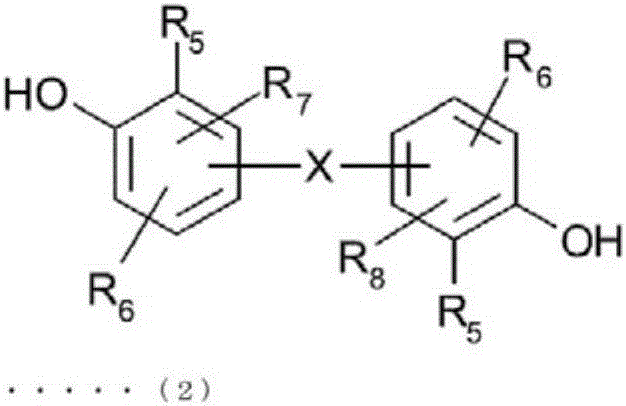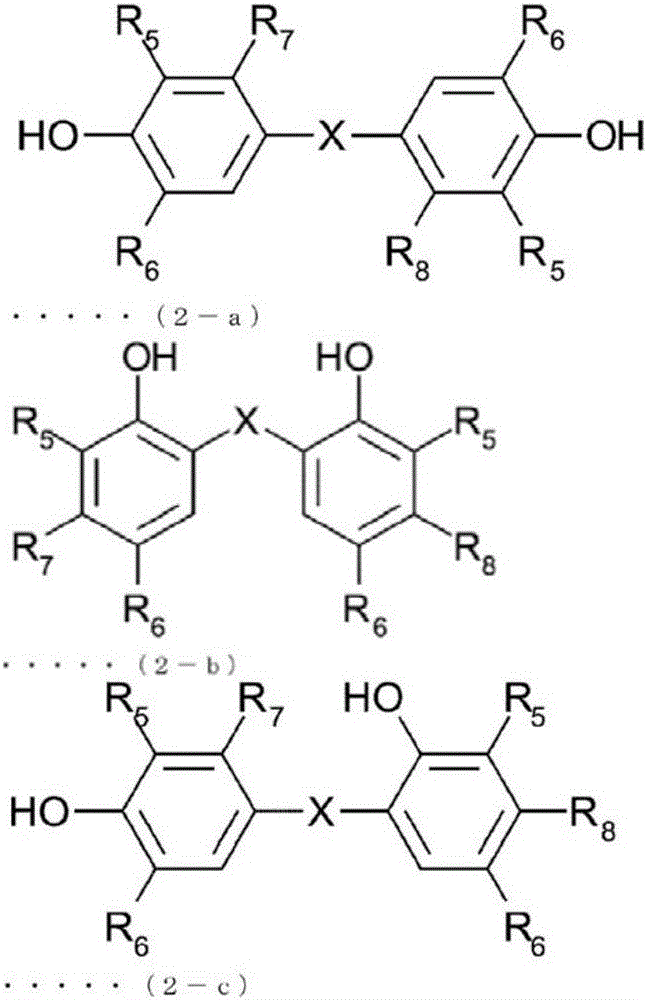Polyphenyl ether powder having small gaps and preparing method thereof
A manufacturing method and technology of polyphenylene ether, which is applied in the field of polyphenylene ether powder and its manufacturing, can solve problems such as solubility research, and achieve the effects of high loose bulk density, high solvent solubility, and good operability
- Summary
- Abstract
- Description
- Claims
- Application Information
AI Technical Summary
Problems solved by technology
Method used
Image
Examples
Embodiment
[0220] Hereinafter, the present embodiment will be specifically described by giving specific examples and comparative examples for comparison therewith, but the present embodiment is not limited to the following examples. The measurement methods of physical properties and characteristics applied to Examples and Comparative Examples are shown below.
[0221] (1) Determination of number average molecular weight (Mn)
[0222] As a measurement device, a gel permeation chromatograph System 21 manufactured by Showa Denko Co., Ltd. was used to prepare a calibration curve using standard polystyrene, and use the calibration curve to measure the number average molecular weight (Mn) of the obtained polyphenylene ether powder. .
[0223] As standard polystyrenes, polystyrenes having molecular weights of 3,650,000, 2,170,000, 1,090,000, 681,000, 204,000, 52,000, 30,200, 13,800, 3,360, 1,300, and 550 were used.
[0224] As the column, a column in which two K-805L manufactured by Showa Den...
manufacture example 1
[0263] In a 40-liter jacketed polymerization tank (the bottom of the polymerization tank is equipped with a nozzle for introducing oxygen-containing gas, a turbine impeller and a baffle, and the exhaust line on the upper part of the polymerization tank is equipped with a reflux condenser), one side is filled with 0.5 L Nitrogen was blown in at a flow rate of 4.57 g, while adding 4.57 g of copper oxide (II), 24.18 g of 47% by mass hydrogen bromide aqueous solution, 11.00 g of di-tert-butylethylenediamine, 62.72 g of di-n-butylamine, 149.92 g of butyldimethylamine, 20.65 kg of toluene, and 3.12 kg of 2,6-dimethylphenol were stirred until a uniform solution was formed and the inner temperature of the polymerization tank was 25°C. Next, dry air was introduced from the nozzle into the polymerization tank at a rate of 32.8 NL / min to start polymerization. Dry air was blown for 140 minutes to obtain a polymerization mixture. In addition, during polymerization, internal temperature wa...
manufacture example 2
[0267] The molecular weight was controlled by changing the polymerization time by setting the drying air supply time to 125 minutes. Other conditions were the same as in Production Example 1 to obtain a polymer solution. The obtained polymer solution was referred to as polymer solution (2).
PUM
| Property | Measurement | Unit |
|---|---|---|
| diameter | aaaaa | aaaaa |
| density | aaaaa | aaaaa |
| diameter | aaaaa | aaaaa |
Abstract
Description
Claims
Application Information
 Login to View More
Login to View More - R&D Engineer
- R&D Manager
- IP Professional
- Industry Leading Data Capabilities
- Powerful AI technology
- Patent DNA Extraction
Browse by: Latest US Patents, China's latest patents, Technical Efficacy Thesaurus, Application Domain, Technology Topic, Popular Technical Reports.
© 2024 PatSnap. All rights reserved.Legal|Privacy policy|Modern Slavery Act Transparency Statement|Sitemap|About US| Contact US: help@patsnap.com










